These are my thoughts from 2 months in Bali (January – March 2017). Please note that prices are either in US dollars ($) or Indonesian Rupiah (IDR). At that time 10,000 IDR was about $0.75.
Food
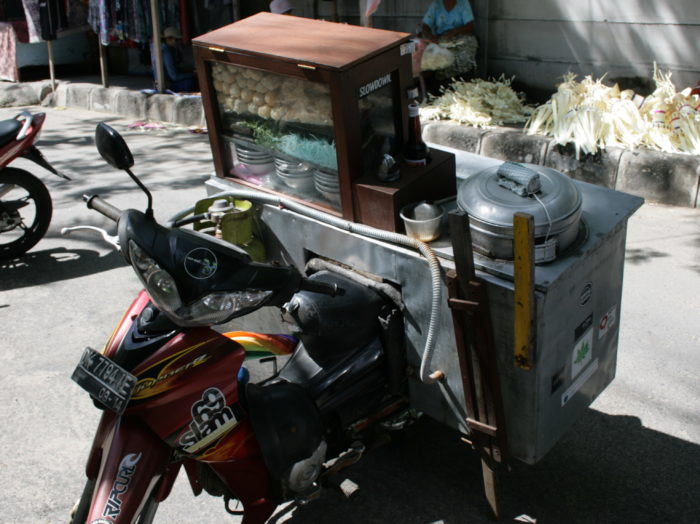
Who needs a food truck when you have a food scooter?
We were excited to try a new ethnic cuisine that was cheap ($1-4/dish). However, after a week we were pretty tired of the cheap local food.
Lots of MSG and spicy (pedas). I eat and like spicy food, especially some of the sambals (chili sauces – many places make their own), but not the kids. Fried noodles (mie goreng) was mostly fried ramen noodles. Fried rice (nasi goreng), special fried rice (nasi campur) was okay, depending on the place. Fried chicken (ayam goreng) was usually dry.
Notice a lot of fried foods.
Soups (soto) were okay, again usually having MSG or meatballs (bakso) that I didn’t love. We were probably biased towards Indonesian cuisine, having eaten good Chinese food for most of our lives.
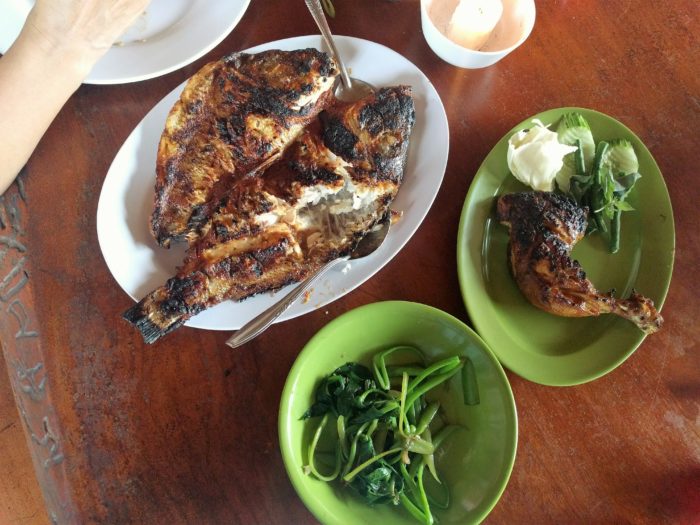
Ikan bakar (grilled fish), ayam bakar (grilled chicken), and pelecing kangkung (water spinach)
We did however find some inexpensive gems while there. Fish is pretty fresh, although I’m worried about some of the reef fish they catch and serve (i.e. parrotfish, jack, etc), mostly because of concerns about ciguaterra. Grilled fish (ikan bakar) is very yummy. We did find a great grilled fish and chicken place in Tabanan called Ikan Bakar Jimbaran, which is the style they cook in the more expensive Jimbaran beach area. There were a couple gems in Ubud with fried chicken in chili tomato sauce (ayam goreng) and one place with all dishes cooked in coconut oil and no MSG. Water spinach (pelecing kangkung) is a vegetable we liked a lot. And you can’t go wrong with chicken satay (sate ayam). Our little inside joke was: “We brake for smoke!”
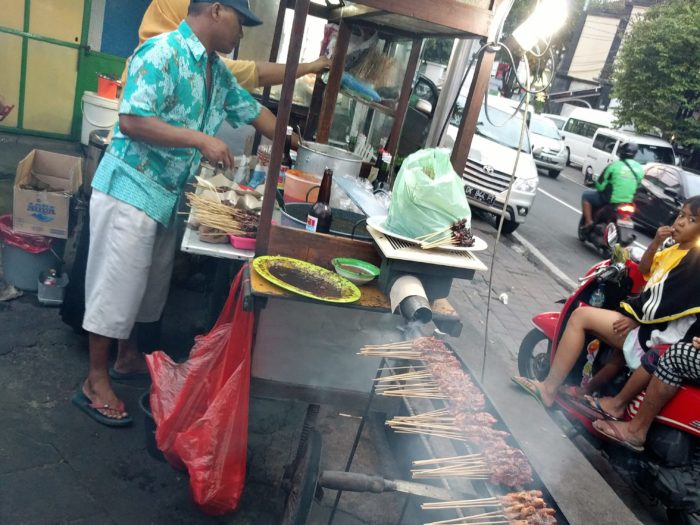
Mmm, smoky chicken satay (notice the use of bathroom exhaust fan; and how many legs are on that scooter)
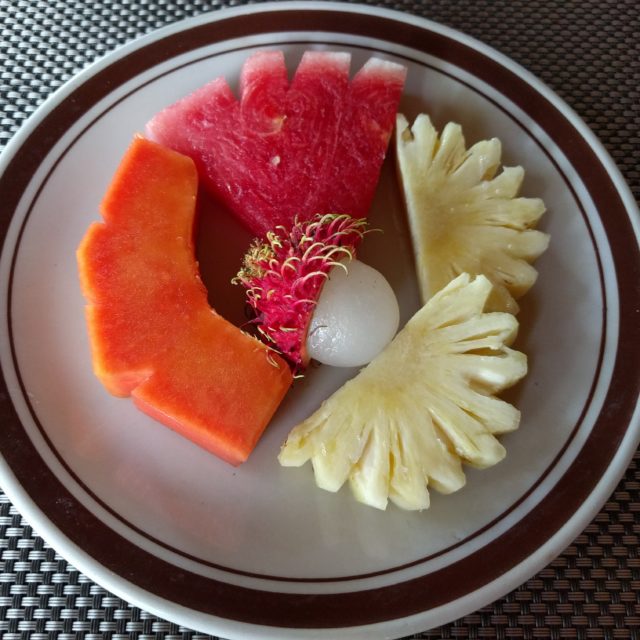
Morning fruit plate of papaya, watermelon, pineapple, and rambutan
Fresh fruit in Bali was great: dragonfruit, mangosteen, salak (aka snakefruit), guava, papaya, pineapple, rambutan, etc. It was hard to go wrong there. Although at one of the local markets, I tried buying bananas (pisang), but I kept getting plaintains. Turns out bananas are pisang manis. Oh well.
One time we bought locally grown strawberries–did you know Bali has a strawberry growing region? I had a conundrum on how to clean/wash them. I decided it was best to give them a quick rinse in the pool (chlorine water) and then rinse with bottled water. BTW the strawberries back home taste way better than the ones in Bali. Stick to the tropical fruit.
Anytime we had juices, we made sure it did not have ice in it, because of the questionable water source.
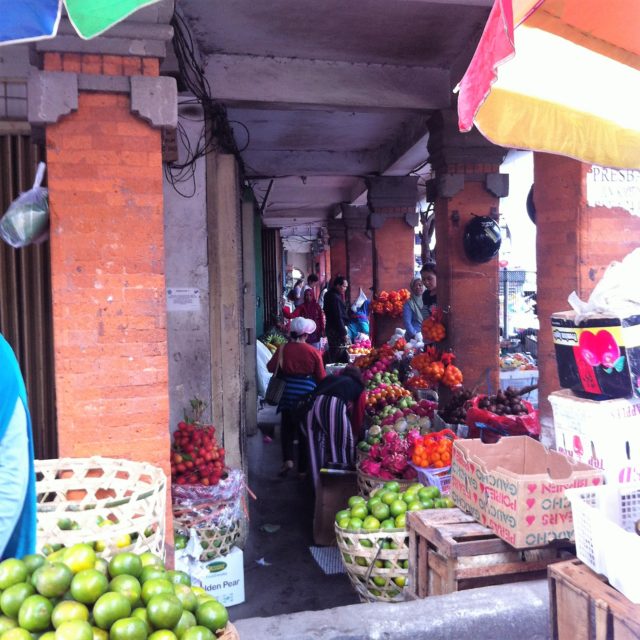
Fruit market in Denpasar.
There are plenty of restaurants that cater to westerners, but they are priced accordingly ($6-$15+/dish), so we rarely ate at those establishments. If you stick to more to local warungs, it tends to be cheaper to eat out than to buy food at a grocery store and cook. That’s because most Indonesians will shop at the local morning markets where prices are much cheaper than the grocery store.
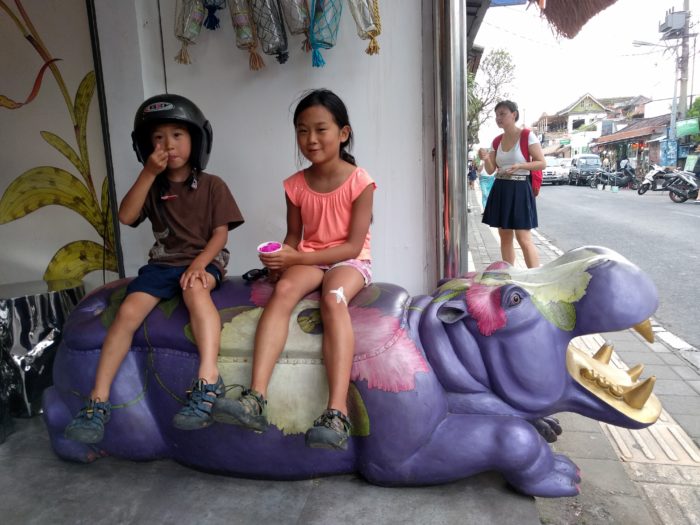
Kiddos eating dragonfruit ice cream
We definitely tried to have some kind of cold snack everyday. In Ubud, it’s easy to find boutique ice cream shops with fancy flavors and premium popsicles ($2-6). But most of the time, we frequented the local mini-mart and bought some flavored ice or popsicle. Some of our favorites included Trico (watermelon, soursop, and lime?), mango, and watermelon which cost 15 to 40 cents each. We did have ice cream, but dairy products are pricier, so we stuck mostly with flavored ices.
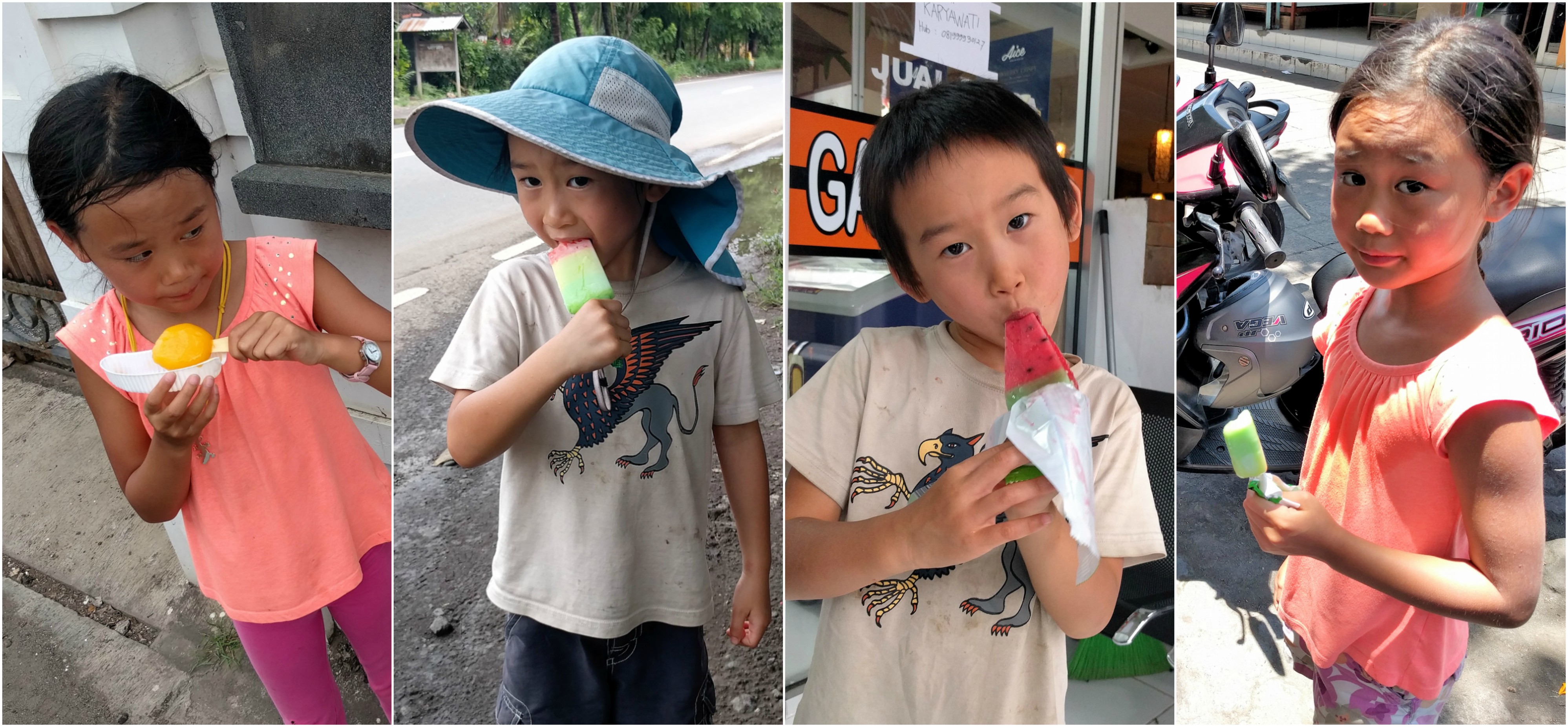
Kids having a cold snack on different days, even though their shirts are the same.
Obviously we like trying the local snacks. At the store, things that caught my attention that I had to try were: green tea flavored Kitkats, seaweed-flavored Pringles, wasabi-flavored potato chips and dried salak. I even found a chocolate-covered dried salak (at a fancy store), mmmm.
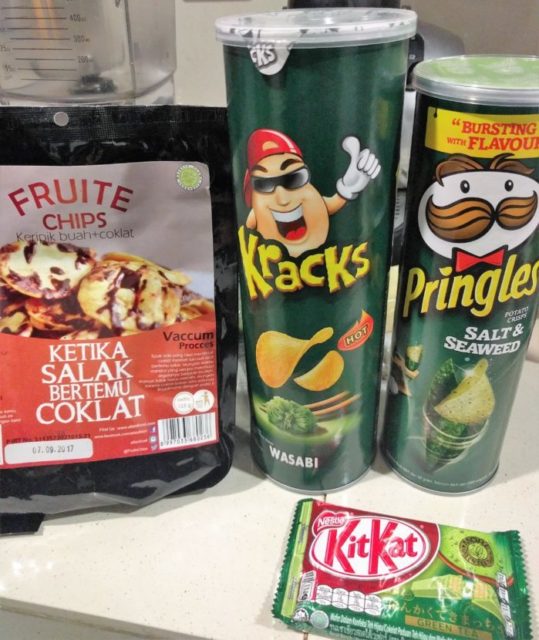
I don’t care what diet you are on, how can you not try these?
I have to mention kopi lewak. This is the famous coffee bean that is eaten by the cat-like civet, then pooped out, harvested and roasted into coffee. You see signs for it everywhere there are tourists. We didn’t try any because it seemed too gimmicky and we could not verify the treatment or mistreatment of these animals.
Water
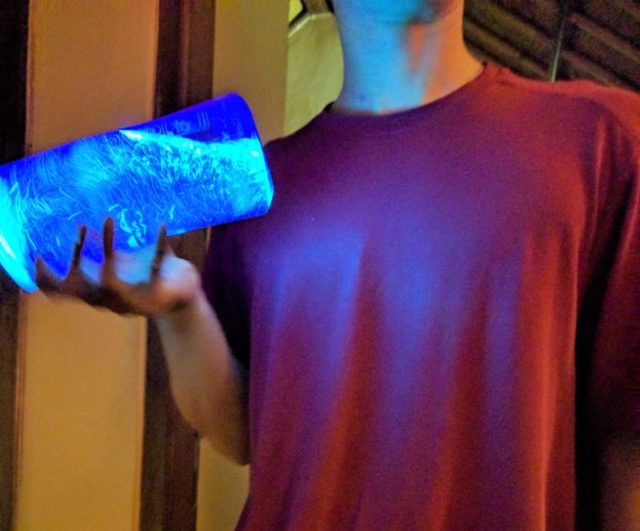
No, I don’t travel with a portable lava lamp. That light is a fancy UV treatment system for my water bottle. It’s a well known fact that Bali does not have clean drinking water; not even the locals drink it. The UV filter kills 99% of the pathogens, but it doesn’t filter out contaminants or heavy metals. We decided it was best to stick to bottled water. We bought one-gallon jugs and/or 5-gallon jugs. Tip: if you stay at a large western branded hotel (like the Hilton Garden Inn), there is usually bottled water available in the fitness room; usually a large 5 gallon water dispenser where you can fill up your water bottles.
Bali Belly
All of us went down with a bout of “Bali Belly” to varying degrees. I even had to take antibiotics for two weeks to treat a potentially lethal parasite. Water is the main transmission route. If you eat street food, be careful of plates that are not completely dry. A good tip we learned towards the end of our stay was to get food to go (takeaway), so that way food is in brand new (uncontaminated) containers. But this has the unfortunate side effect of creating a lot of waste. And obviously be careful of raw/uncooked foods like salads. We only ate cooked vegetables unless it was from a good reputable source.
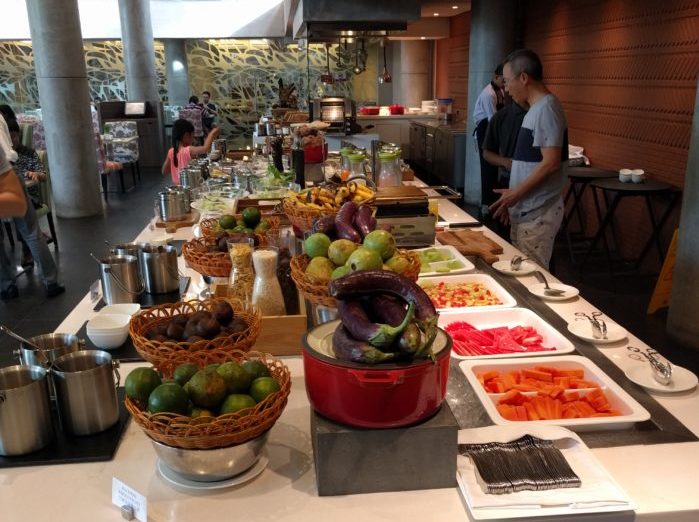
I confess, we did eat at this western establishment a lot.
Overall it was a good experience and we were able to find foods we liked at cheap prices. However with the contrast of food from Kuala Lumpur (Malaysian) and Taiwan (Chinese) on this trip, Bali’s cuisine paled in comparison. Sorry Bali.
